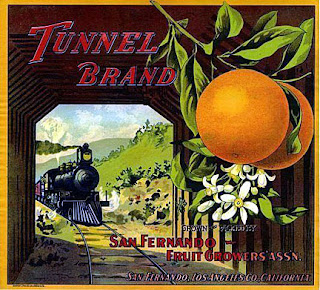
ANSWER: Many people today haven’t ever seen an authentic cigar-store Indian. And with the sensitive climate about Native Americans, they probably never will. But back in the 19th century they were a common site along the main streets of small towns across the country.
Cigar-store Indians, with their serious chiseled faces, conveyed a sense of grandeur as they greeted customers to tobacco shops. Designed to capture the attention of passersby, most of whom in the 19th century lacked a shared common language, the sidewalk wooden Indian became a symbol of the tobacco retail business. Because American Indians introduced tobacco to the Europeans as early as the 17th century, European tobacconists began using figures of American Indians to advertise their shops.
 Most of these silent greeters stood just outside the door, often mounted on wheels so that they could be rolled in and out. The origin of the wooden Indian dates back to England in 1617, when tobacco shop owners placed small wooden figures called "Virginie Men," depicted as black men wearing headdresses and kilts made of tobacco leaves, on countertops to represent tobacco companies.
Most of these silent greeters stood just outside the door, often mounted on wheels so that they could be rolled in and out. The origin of the wooden Indian dates back to England in 1617, when tobacco shop owners placed small wooden figures called "Virginie Men," depicted as black men wearing headdresses and kilts made of tobacco leaves, on countertops to represent tobacco companies.
Eventually, the European cigar-store figure began to take on a more authentic yet highly stylized appearance, and by the time these figures arrived in America in the late 18th century, they had become authentic Indians, fairly accurate and beautifully carved.
Carvers of these shop figures came from among the makers of ship figureheads. During the late 19th century, the demise of the clipper ship era forced figurehead carvers out of business. These craftsmen gradually turned to producing wooden Indians. Production flourished from about 1840 to the end of the century. In the 1890s, city ordinances required that figures be confined to the interiors of shops, and gradually the statues went out of use. Instead of attracting customers on the outside, they served as mere decoration inside.
 While a few makers produced cigar-store Indians of cast iron, most used wood. Carvers used axes, chisels, and mallets on white pine or even quartered ships’ masts, then painted the completed figures in a variety of colors and designs.
While a few makers produced cigar-store Indians of cast iron, most used wood. Carvers used axes, chisels, and mallets on white pine or even quartered ships’ masts, then painted the completed figures in a variety of colors and designs.
While some of these wooden Indians appeared inviting, happily greeting customers, others appeared defensive, as if guarding the store from shoplifters, thieves, and "no smoking" ordinances.
 American carvers sculpted Indian chiefs, braves, princesses and Indian maidens, sometimes with boarded papooses. Most of these displayed some form of tobacco in their hands or on their clothing. They generally depicted stereotypical chiefs and squaws, clothed in fringed buckskins, draped with blankets, decorated with feathered headdresses, and sometimes shown holding tomahawks or bows, arrows and spears. Their facial features rarely resembled members of any particular American Indian tribe.
American carvers sculpted Indian chiefs, braves, princesses and Indian maidens, sometimes with boarded papooses. Most of these displayed some form of tobacco in their hands or on their clothing. They generally depicted stereotypical chiefs and squaws, clothed in fringed buckskins, draped with blankets, decorated with feathered headdresses, and sometimes shown holding tomahawks or bows, arrows and spears. Their facial features rarely resembled members of any particular American Indian tribe.
 Female wooden Indians, also known as “Pocahontas,” appeared four times more than their male counterparts in classical or Egyptian-inspired poses. Carvers occasionally donned them with headdresses of tobacco leaves instead of feathers and dressed their male figures in the traditional war bonnets of the Plains Indians.
Female wooden Indians, also known as “Pocahontas,” appeared four times more than their male counterparts in classical or Egyptian-inspired poses. Carvers occasionally donned them with headdresses of tobacco leaves instead of feathers and dressed their male figures in the traditional war bonnets of the Plains Indians.
Carvers produced about 300 cigar-store Indians annually—yet there are relatively few original ones left today. Those that do exist reside in museums and in private collections. Historians believe carvers created over 100,000 cigar-store Indians. Since the carvers all competed with each other for the tobacconists' business, each tried to out do the other in individuality, versatility and depth. A few artists even used Native Americans as models.
To read more articles on antiques, please visit the Antiques Articles section of my Web site. And to stay up to the minute on antiques and collectibles, please join the over 30,000 readers by following my free online magazine, #TheAntiquesAlmanac. Learn more about "Coffee--The Brew of Life" in the 2023 Summer Edition, online now. And to read daily posts about unique objects from the past and their histories, like the #Antiques and More Collection on Facebook.































